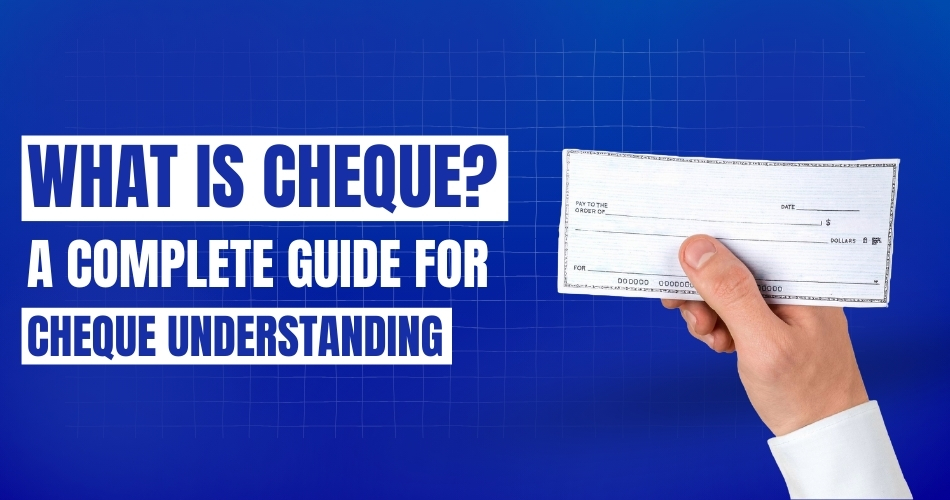A cheque is one of the most frequently used modes of financial instruments for making payments. A cheque is a written order whereby a bank is asked to pay a certain sum of money from an account bearing the signature of a person in favor of another person or legal entity. We shall break down the intricacies of a cheque, how it works, its various components, types of cheques, and much more. Are you new to cheques? Have you used cheques but need a refresher? This guide shall give you a deep understanding on how cheques function. Let’s get start.
So, what is a Cheque Leaf?
A cheque leaf is an individual sheet from a cheque book with which the account holder makes payments or withdraws. It contains all relevant information as regards the payment, including cheque number which forms a very important part of the cheque. Valuable, as it is, a cheque leaf represents the instructions issued to a bank to effect the transfer of funds to the payee. But what is a cheque leaf? Simply put, it is a paper that is used as a financial means of giving the go-ahead to transfer or pay.
Understanding the Cheque Number: Where is the Cheque Number?
The cheque number is simply a unique reference number on the cheque leaf that will allow you to track and verify the transaction of every cheque. When you ask, “Where is the cheque number?” It is usually found printed at the bottom of a cheque along with other details like the bank code and account number. In terms of record-keeping, the cheque number on a cheque is important because it prevents errors in checking payments. What’s more, when you want to stop a cheque payment or track which cheques were issued, knowing how to identify the cheque number will come handy.
How To Write A Cheque Properly?
Writing a cheque might not be rocket science, but when done incorrectly, it may lead to some hassles. Consider these aspects to see whether you have filled your cheque in correctly and are legally valid. Here is a step-by-step procedure for writing a cheque:
Date: Fill your date at the right-hand top corner of the cheque leaf.
Payee Name: You write or type the name of the payee. Checks are usually drawn for a particular person or firm .
Amount in Words: This is the numeral corresponding to the amount. Be careful not to mis-write this. There is a distinct box below the payee’s name, for the amount in rupees .
Amount in Numbers: You fill this immediately below the payee’s name in the box for the payment amount.
Signature: You should write your cheque in the signature space. It should be check that the signature made is the same one on file with the bank.
Memo: Option can be there, you may write a memo to note the purpose of the cheque; this can help as a reminder for both the issuer and the payee.
Cheque Format and Composition
A cheque format is of utmost importance to be filled in correctly. Some important components comprise the cheque leaf, all serving their purpose in the payment process. Consider this a breakdown of the main components of a cheque:
Cheque Number: Towards the bottom of the cheque, there is a number that goes by the name cheque number. It is actually a unique number assign to each cheque.
MICR Code: MICR (Magnetic Ink Character Recognition) code is three numbers position on the right-hand bottom side of the cheque. They assist the bank in processing cheques without errors and in the shortest possible time.
Payee Line: The name of the payee-the individual or business-is written on this line.
Amount in Figures and Words: This is the amount that should be paid, including the numerical value as well as the word form of it.
Signature Line: The issuer writes his signature on this line approving payment for the said cheque.
Every element in the cheque form is purposefully place and assists in the efficient completion of financial transactions.
Types of Cheques: Various Forms You Should be Aware of
There are multiple kinds of cheques, but all serve one purpose. Here are the major types of cheques one may encounter:
Bearer Cheque: This is the most common cheque issue, which allows the payee either cash it or deposit in his account. It can be transfer to anyone; any person holding it can claim the payment.
Order Cheque: In the order cheque, the actual payment goes to only one person whose name has been address on the cheque. Hence, it is safer than the bearer cheque.
Crossed Cheque: You cannot cash this cheque over the counter. Payment can be credit to the account of the payee only. Chances of fraud are reduce.
Post-Dated Cheque: A cheque that includes a future date is called a post-dated cheque. The bank would not encash the cheque and would return in case the cheque has crossed the expiry date.
Stale Cheque: The cheque presented after its validity period, mainly three months from the date of issue.
How to find the Cheque number and its Importance
It is very important to understand how to get the cheque number as this might be a very important consideration, especially in relation to tracking the issued cheques and disputes. The cheque number is the first line of digits at the bottom of the cheque leaf; in general, it has six digits and is used to enable tracking for both the issuer and the bank in confirming cheques payments. Knowing where the cheque number is located and how to find it should keep you managing your cheque book properly and prevent any complications from misused or lost cheques.
Definition Check: What Is It?
Cheque, in a broader perspective, refers to the spelling that is more commonly used in the U.S. whereas cheque holds a more extensive preference in the UK. The term defines anything related to financial instruments whereby a particular individual can demand a bank to pay a definite sum of money to any other person or entity. Here, the payment is made from the account of the payer to that of the payee. Cheques are quite safe and reliable for personal as well as commercial transactions.
How to Apply for a Cheque Book?
If you wonder how to apply for a cheque book, it’s an easy process where, depending on the bank, differs slightly, but for the most part, you can apply for a cheque book at any one of the following ways:
Online Banking: Most banks provide the facility to request cheque books through its online banking. Log in, navigate to the cheque book request section, and voilà, it’s done.
Mobile Banking App: Like online banking, most of the banks provide the facility for cheque book requests through their mobile app.
You can visit your nearest bank and raise a cheque book request form. Usually, cheque books are provided to your registered address.
At times, you would be able to request a cheque book from any ATM supported by your bank. Use your debit card to open the relevant option in the ATM menu.
Once you order a cheque book, it will take you two working days or so to get it. After which you can start writing your cheques for all purposes.
Conclusion
Cheques are still a part of every banking system, despite the emergence of digital modes of payments. Understanding cheque leaf meaning, how to look at the cheque number. And how to write a cheque is a must to proceed with any such transactions. Knowing the types of cheques and their uses will help you choose the right cheque type for any financial need. Whether you want to make personal payments or business transactions. This guide becomes a complete one in navigating the realm of cheques effectively.

